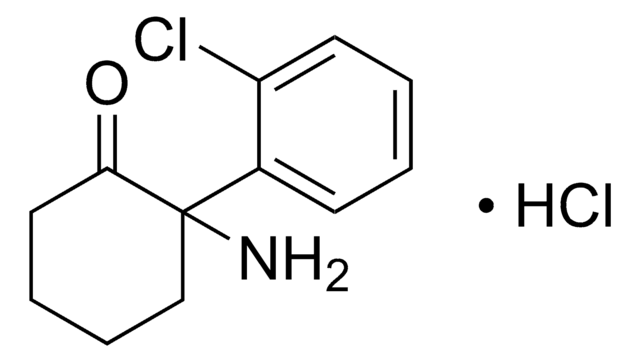Kluczowe dokumenty
E0276
EPPS
BioPerformance Certified, suitable for cell culture, ≥99.5% (titration)
Synonim(y):
4-(2-Hydroxyethyl)-1-piperazinepropanesulfonic acid, 4-(2-Hydroxyethyl)piperazine-1-propanesulfonic acid, N-(2-Hydroxyethyl)piperazine-N′-(3-propanesulfonic acid), HEPPS
About This Item
Polecane produkty
klasa czystości
BioPerformance Certified
Próba
≥99.5% (titration)
Formularz
crystalline powder
metody
cell culture | mammalian: suitable
zanieczyszczenia
endotoxin and Total Aerobic Microbial Count, tested
pH
7.3-8.7
przydatny zakres pH
7.3-8.7
pKa (25°C)
8.0
pKa
8
mp
237-239 °C (lit.)
rozpuszczalność
H2O: 25 g + 50 mL, clear, colorless
ślady kationów
heavy metals (as Pb): ≤5 ppm
λmaks.
A290 at ≤0.1 (C=33% w/w)
Zastosowanie
diagnostic assay manufacturing
ciąg SMILES
OCCN1CCN(CCCS(O)(=O)=O)CC1
InChI
1S/C9H20N2O4S/c12-8-7-11-5-3-10(4-6-11)2-1-9-16(13,14)15/h12H,1-9H2,(H,13,14,15)
Klucz InChI
OWXMKDGYPWMGEB-UHFFFAOYSA-N
Szukasz podobnych produktów? Odwiedź Przewodnik dotyczący porównywania produktów
Opis ogólny
Zastosowanie
Cechy i korzyści
- BioPerformance Certified, high-quality level (400), ensures reliable and consistent results.
- Suitable for mammalian cell culture techniques
Kod klasy składowania
11 - Combustible Solids
Klasa zagrożenia wodnego (WGK)
WGK 3
Temperatura zapłonu (°F)
Not applicable
Temperatura zapłonu (°C)
Not applicable
Środki ochrony indywidualnej
Eyeshields, Gloves, type N95 (US)
Wybierz jedną z najnowszych wersji:
Masz już ten produkt?
Dokumenty związane z niedawno zakupionymi produktami zostały zamieszczone w Bibliotece dokumentów.
Nasz zespół naukowców ma doświadczenie we wszystkich obszarach badań, w tym w naukach przyrodniczych, materiałoznawstwie, syntezie chemicznej, chromatografii, analityce i wielu innych dziedzinach.
Skontaktuj się z zespołem ds. pomocy technicznej





